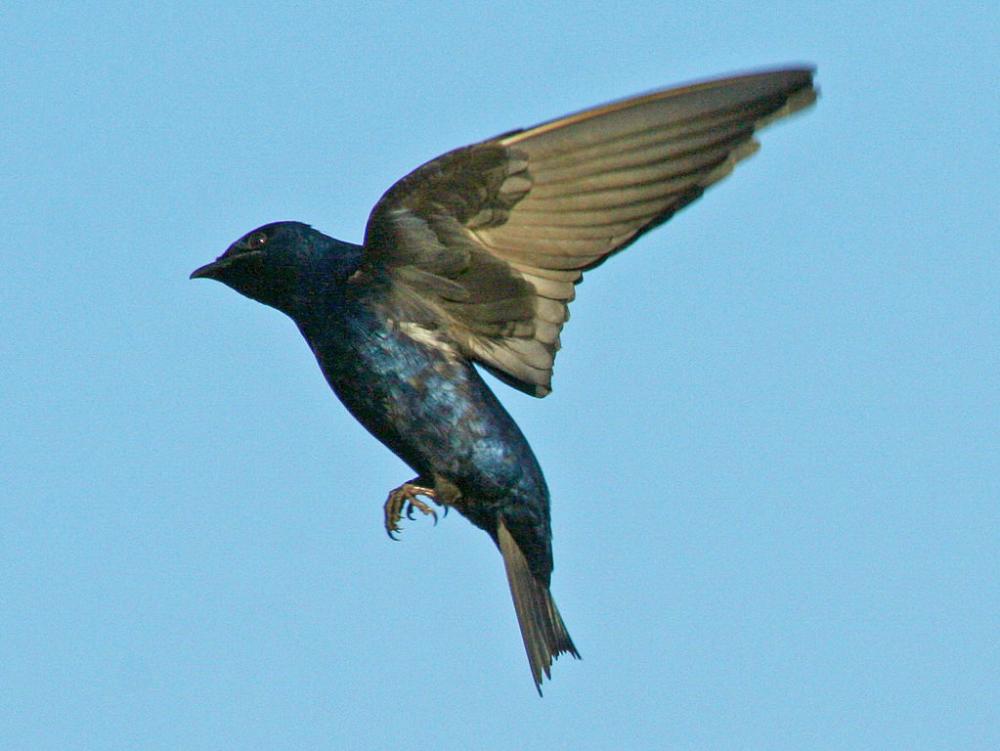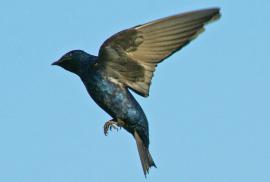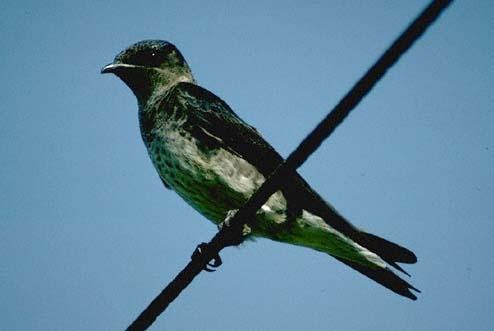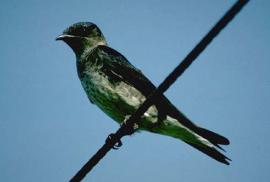Guide to Boreal Birds
Overview
The custom of erecting a martin house to attract these beneficial birds was practiced by the early settlers and, before them, by the southern Indian tribes, who hung clusters of hollow gourds in trees near their gardens. In other areas, the species nested in tall dead trees riddled with woodpecker holes, but these original colonies never reached the size -- as many as 200 pairs -- of colonies found in large martin houses today. In the West, it tends not to occupy martin houses, preferring the open countryside or downtown areas, and is becoming scarcer, probably due to competition with European Starlings for nest sites.
Description
7-8 1/2" (18-22 cm). Our largest swallow. Adult male dark steel-blue. Female and immature male duller above, pale gray below. Overhead, similar in shape to European Starling, but flight more buoyant and gliding.
Voice
Liquid gurgling warble. Also a penetrating tee-tee-tee.
Nesting
4 or 5 white eggs in a mass of grass and other plant material placed in a cavity -- sometimes a hole in a tree or a martin house with many separate compartments, where the birds nest in a colony.
Habitat
Open woodlands, residential areas, and agricultural land.
Range/Migration
The popularity of this bird with the public has led to the almost instantaneous communication regarding the first arrivals on the Gulf coast each year (see the website called "Purple Martin Forum"). In 2002, the birds started to show up during the first part of January, although the bulk of the migration is yet to come. The true winter distribution of North American Purple Martins is difficult to define, because they tend to mix with several other similar species in South America. Mixed flocks of martins form huge roosts in parts of South America, including one flock that roosts in a sprawling petrochemical plant, covering the pipes and catwalks at night. Evidence suggests that birds from many breeding locations make up these flocks; a group of martins marked in a roost in Sao Paulo, Brazil, later turned up in nests in Texas, Louisiana, Missouri, Wisconsin, Kansas, Virginia, Maryland, Pennsylvania, New Jersey, and Ontario. The actual winter range of the two western populations of Purple Martins remains unknown.
Breeds from British Columbia, central interior Canada, and Nova Scotia southward, but absent from interior western mountains and Great Basin. Winters in tropics.





